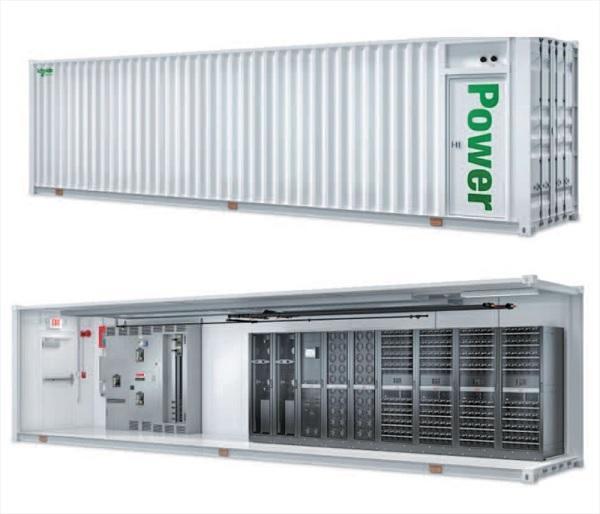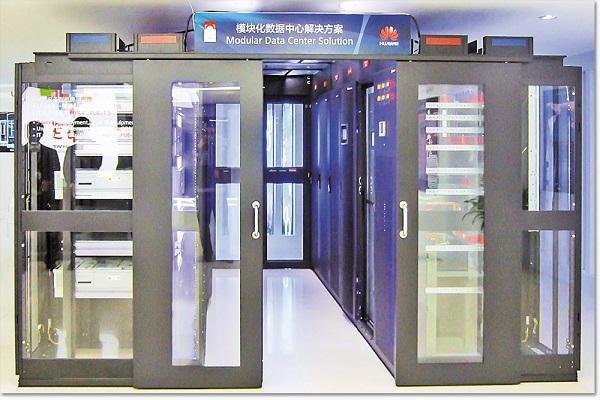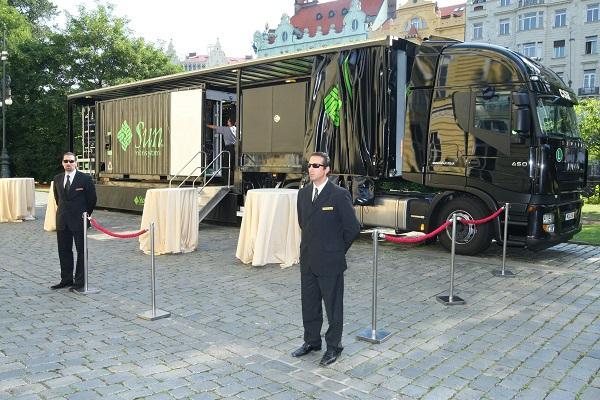Schrödinger data center

For the first time I encountered modular data centers in my professional youth: true, then instead of a beautiful container with all life support inside there was an old bungalow with a pair of racks. Who would have thought that less than a dozen years later the idea would become so popular that the leaders of the server market would rush to urgently equip their own technological trailers.
I propose how to understand the idea of modular and container data centers, and speculate on their applicability and real benefits.
Why datacenter container
Typically, beautiful container solutions advertising starts with something like "if you have an eternal problem with opening typical branches ...." or “imagine that you urgently need to move the data center to another city ...”. In such cases, they offer either to buy a similar configuration each time in a container, or to invest in a mobile data center in a 20 or 40-foot ISO container. Then you can move it as needed.
The demand for such decisions arises for several reasons:
mobility - for military tests, field work, competitions and other similar activities, the data center should be on wheels and ready for use almost immediately after installation;
Scalability - most data centers are designed with the possibility of growth in increments of several server racks, as well as the installation of another module-container;
need for easy carry. When moving to another site, the container data center is relatively easy to dismantle and carry;
- commissioning speed - the timing of the transfer of such a data center to readiness mode ranges from a couple of months to six months, in contrast to the capital construction inside the building.
But there are a lot of offers on the market, so we will understand the key differences.
Module or container
Often, modular, container and mobile data centers are synonymous, but there are still nuances.
Modular data center is similar to the designer, where a sort of Voltron Defender of the Universe is assembled from ready-made blocks and modules. It is assembled on the basis of ISO-containers or easily assembled sandwich panels. There are also options from oversized containers of its own production.
Often these data centers are delivered as a set of separate modules:
IT module or computer room - with server racks. For example, in HPE POD, 22 50U racks are placed in a 40-foot container, which allows up to 1,100 single-unit servers to be placed. Also in this module there are fire extinguishing systems, electricity and air distributors;
cooling module - air conditioners are used in budget versions, and chillers are used in more expensive versions. As a energy efficient solution in countries with a cold climate, free cooling is popular;
the power supply module in which the UPS is installed, switchboards, automatic switching systems, transformers, etc. Diesel generators can be installed in the same module or rendered separately;
- sometimes an additional module is used for other needs: for example, with the duty station and / or control unit.
Convenience solutions based on individual units in that you can order only the necessary. For example, if a situation arises when there is not enough power supply in a traditional data center, a separate power module can be installed on the street next to it.

Power Module from Schneider Electric
In turn, each of the modules is completed with certain components, which also consist of modules (almost like a dream in a dream in a famous film). For example, an IT module might contain racks with blades , and a power module might be APC Symmetra.
Such solutions are offered not only by vendors, but also by integrators, some of whom may even independently develop an architecture and layout. Of the options "from the vendor", Huawei solutions are interesting, in which all the equipment - from the server to the air conditioner - from the same manufacturer.
It should be noted that the modular data center is not necessarily located in a container on the street - it can be mounted indoors as in the picture below:

Huawei Modular Indoor Data Center
A mobile data center resembles a backpacker backpacker or a motor home - everything you need is collected in one, maximum two containers. This makes it possible to transport it assembled and put into operation in a matter of days, and even hours.
Most often, for the convenience of transportation are used the same ISO-containers. Initially, the idea was used by the military - such data centers began to popularize container solutions. The most famous representative is Sun Modular Datacenter (Project Blackbox):

Mobile Data Center Sun Modular Datacenter
But Sun has long been turned into Oracle, and an exclusive black box pushed even more exciting solutions. For example, vmWare Express:

The vmWare Express datacenter is stylish, trendy and mobile.
In Russia, such decisions are rarely met - not only because of bad roads. Unfortunately, I could not find the finished data center based on GAZ-66, and with the advent of IaaS, the trailers of cheerful colors are slowly becoming a thing of the past.
If we talk about container data center , then this is just a solution from ISO containers, by which both modular and mobile versions can be implied. Simply put, this is the same mobile data center, but without wheels and tractors.
The disadvantages are the dimensions 2.4 x 2.5 m. And the need for wall insulation due to climate makes it impossible to install racks above 42U. You will also have to forget about the wires under the floor or above the false ceiling. There are other limitations: for example, in terms of power - an average of 500 kW for the power and cooling module, and about 250 kW for the machine. Yes, and with the heat sink can be difficult.
In general, any such data center is different from the traditional installation speed and, as a rule, high density equipment. Since the assemblies have already been tested, the cost and speed of design is significantly lower than the classic versions.
In addition to the names, you can classify data centers into categories (Tier), but you can get any data center from any category from any manufacturer — if you had money. Tier II and III are generally used. You can write a separate treatise on the differences between Tier-s, so now we will not dwell on it.
With 20- and 40-foot containers everything is clear, but because of their drawbacks, the installation of sandwich panels is often used. For example, this is supplied by the NOTA data centers from Utilex, where the container contains only everything necessary for assembly.

HOTA data centers - complete with everything you need to build, as in the constructor
Another example is the solution from GreenMDC for placement inside the hangar:

Hangar data center option
Unfortunately, the exact cost of all these solutions is not publicly available - everything is considered on request. In 2015, the Network Solutions / LAN Magazine made an order for a scalable modular data center with several contractors to review offers on the market. As a result, the cost ranged from 1.8 million rubles per rack.
Total
A modular data center for mounting outside or inside a building looks like a fairly convenient solution. Another thing is that for the usual commercial organization enough server room with a pair of household air conditioners, or even infrastructure in the cloud. And now the cloud provider can use modular or container data centers.
If you have worked with modular data centers - share your operating experience in the comments.
')
Source: https://habr.com/ru/post/324628/
All Articles